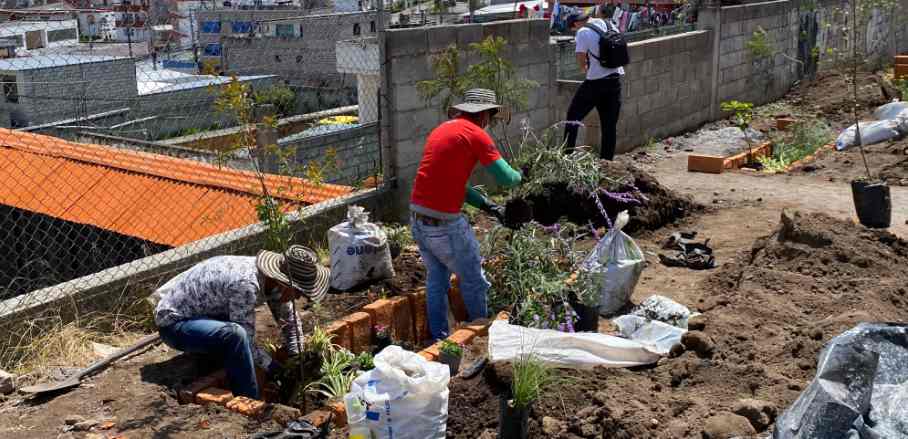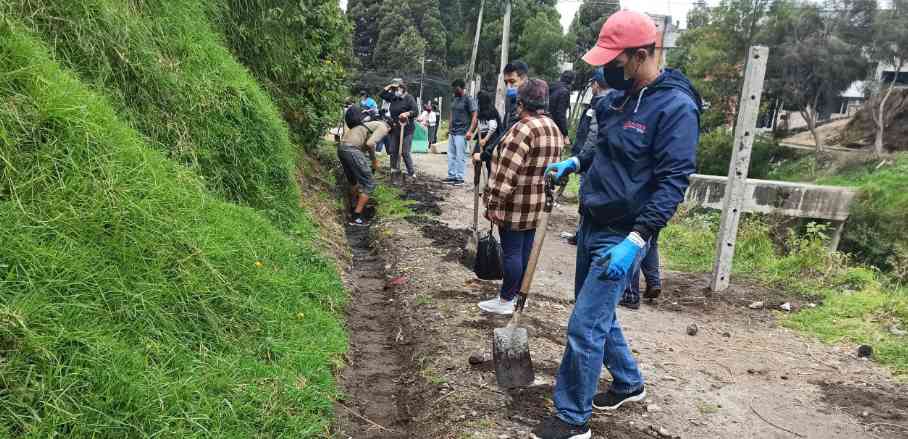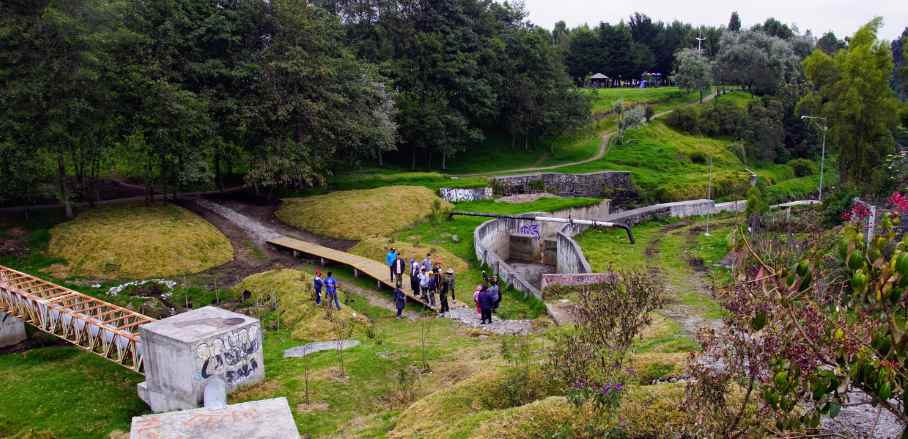Nature-Based Solutions in Quito: From Flooding Issues to a River of Positive Change
Quito bears the brunt of climate change, from 100-year storms to mudslides to heat waves – all part of the city’s ‘new normal.’ Urban journalist Mark Douglas Wessel explores how Ecuador’s capital is leveraging the power of Nature-based Solutions to cope with these challenges.
On the surface, Quito in Ecuador is a city that is a poster child for climate change for all of the wrong reasons. Earlier this year, the Guardian newspaper reported that after nearly 24 hours of heavy rainfall, the rain-soaked hillsides of the city collapsed, causing massive mudslides that killed 24 residents and injured 32 more. Waves of mud, some three metres high, crashed through windows and doors and carried away vehicles, motorcycles, rubbish bins, and other debris.
In addition to mudslides posing a constant threat, during its hottest months, residents of Quito must also contend with heat waves, droughts (often with accompanying fires), a high UV index due to a combination of the city’s high altitude (2,850 metres/9,350 ft. above sea level), and limited tree canopy. The latter is a result of uncontrolled deforestation over the years.
It would have been a prime opportunity for Quito city counsellor René Bedón to focus on these trials and tribulations at the recently concluded UN Climate Change Conference COP27 in Sharm-El-Sheikh. But instead, he used his speech to talk about how Quito has embarked on an ambitious plan to fight global warming – potentially making Quito a ‘climate change poster child’ for all of the right reasons.
Quito CLEVER City
Bedón shed light on the city’s ambitious Climate Change Strategy during an ICLEI – Local Governments for Sustainability session at COP27 entitled “Nature-based Solutions and Circular Development Strategies to Address the Climate Emergency in Latin America.” The strategy pursues particularly ambitious goals for a city in the so-called Global South: reduce GHG emissions by 30 per cent by 2030, 50 per cent by 2040, and achieve carbon neutrality by 2050.
Nature-based Solutions (NbS) will play a prominent role in helping Quito to reach these goals. Currently, the Ecuadorian capital is the only Latin American city involved in the EU-sponsored CLEVER Cities initiative, which has the expressed goal of using nature and green space to bring people together in a healthier, more resilient setting. As the CLEVER Cities website observes, “Quito is spearheading the (NbS) charge in South America […] to foster inclusive urban regeneration and sustainable development.” Two prominent examples, the efforts in San Enrique de Velasco and the Quito Ravine Master Plan, stand out in this regard.
Working With Local Communities Is at the Centre of Nature-based Solutions
The initial focus area of the CLEVER Cities project in Quito is the San Enrique de Velasco neighbourhood. Despite the capital’s rich biodiversity which includes nearly 18,000 registered plants, 112 species of mammals, and 542 distinct species of birds, this particular neighbourhood has borne the brunt of environmental degradation. According to Nicolas Salmon, founder of the consulting firm YES Innovation, which is helping to implement Quito’s NbS actions via CLEVER Cities, there was virtually no vegetation or green space in San Enrique de Velasco, which he says left residents with “a weak sense of natural heritage.” So much so that the perception of the local youth surveyed surprised the researchers as they considered the small amount of vegetation they had as normal.

Implementing rain gardens in San Enrique de Velasco © YES Innovation
However, as a result of what Salmon describes as small but impactful interventions, the city is helping to reduce citizen exposure to environmental as well as social and economic vulnerabilities. The measures include adopting more effective water management strategies, planning and creating eco-friendly parks, and capacity-building through targeted outreach programmes.
“What we’re doing is planning Nature-based Solutions through co-creation,” Salmon observes. “That means planning NbS with the people,” as a way to both educate and engage residents so they take ownership of and are more supportive of the actions being taken. Residents are now literally reclaiming their streets, replacing paved areas that contribute to downstream flooding with rain gardens, swales (shallow channels used to capture water runoff), and tree plantings. “We’re managing the water on-site so that instead of it discharging downstream, the rain gardens with plants are allowing the water to infiltrate.” As for the tree plantings –they create shade and attract birds and bees.
Managing Natural Ravines with NbS
Yet another initiative closely tied to Quito’s Nature-based Solution efforts is the municipality’s Ravine Master Plan. Daniel Bonilla, who is an environmental analyst for the city, says the plan is designed to manage the city’s natural ravines which provide drainage for rainstorms.
Programme efforts include, on the one hand, educating residents that ravines are prone to flooding and therefore less than ideal places to live. On the other hand, the community is encouraged to value and protect the ravines as part of their natural heritage. Bonilla notes that “we have reforestation efforts (underway) in cleared areas that have been degraded in the past,” tied to the overarching goal of helping to restore the natural setting.

Ravine management in Quito © City of Quito
A consistent pattern in all initiatives taking place on the ground is the need to take into account and manage the perceptions of locals. For instance, some local businesses have been against tree plantings because of the misguided perception that trees make neighbourhoods less safe by providing a place for thieves to hide. “We have to educate them about the positive impact of landscaping and create awareness campaigns around the benefits of tree shade and how they protect against heat and UV radiation,” Bonilla concludes.
Now, in what is essentially a 180-degree change in mindset, local volunteers are helping to spearhead the drive to not only plant trees but to maintain them on an ongoing basis. And consequently, everyday citizens are coming to terms with the long-term benefits of re-greening their neighbourhoods.
NbS Make Cities More Climate-Resilient and Ultimately more Liveable
Reflecting on the critical role Nature-based Solutions will play for Quito over the coming decade, NbS have the potential of making the city more climate-resilient and as a consequence, a better place to live. And if everything falls into place as planned, then Quito could potentially lead the way for other cities around the world – north and south – by tapping into the power of Nature-based Solutions.
